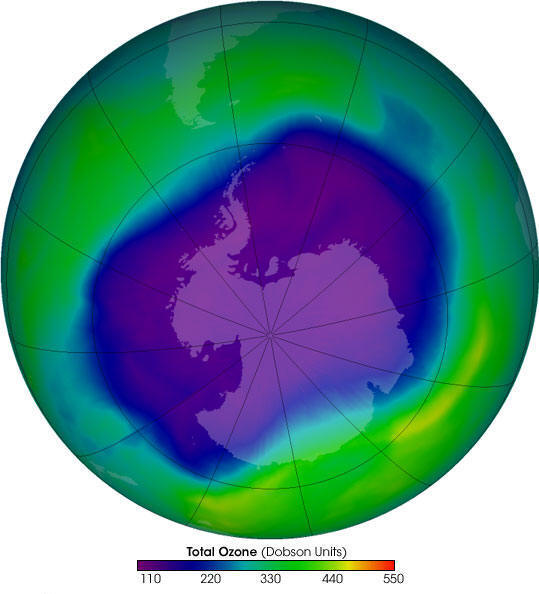
Image Source: coolantarctica
Antarctica, the frozen continent at the southern end of the Earth, has been witnessing a concerning trend in its ozone layer since 2001. The ozone hole, a region of severe ozone depletion in the stratosphere, typically experiences an expansion during mid-spring, posing significant environmental challenges.
Scientific observations and studies conducted over the years reveal an alarming continuation of the expansion of Antarctica's ozone hole during mid-spring. This phenomenon has raised global concerns and demands urgent attention from the international community.
Understanding the Ozone Hole
The ozone layer, located in the stratosphere, plays a crucial role in protecting life on Earth by absorbing the majority of the sun's harmful ultraviolet (UV) radiation. However, human-made chemicals called chlorofluorocarbons (CFCs) and other ozone-depleting substances have been identified as the primary culprits behind the depletion of this protective layer.
During Antarctica's springtime, a unique set of atmospheric conditions, including low temperatures and high-altitude clouds, contributes to the formation of the ozone hole. These conditions facilitate chemical reactions that accelerate ozone depletion, resulting in the expansion of the hole.
Continued Expansion and Environmental Implications
Despite global efforts to curb the production and use of ozone-depleting substances following the implementation of the Montreal Protocol in 1987, the persistent expansion of Antarctica's ozone hole during mid-spring has emerged as a significant challenge.
Scientists have observed that the continued growth of the ozone hole could lead to increased exposure of living organisms to harmful UV radiation. This exposure poses serious threats to human health, including higher rates of skin cancer, cataracts, and adverse effects on marine ecosystems and terrestrial vegetation.
Way Forward and Global Cooperation
The situation demands a concerted effort from the global community to address the ongoing expansion of Antarctica's ozone hole. Strengthening international collaborations, adherence to existing environmental agreements, and implementing stricter measures to phase out ozone-depleting substances are crucial steps toward mitigating this environmental challenge.
Scientists, policymakers, and stakeholders need to work together to devise innovative solutions and strategies that prioritize the protection and restoration of the ozone layer. Public awareness and active participation in sustainable practices are essential in ensuring a healthier environment for current and future generations.